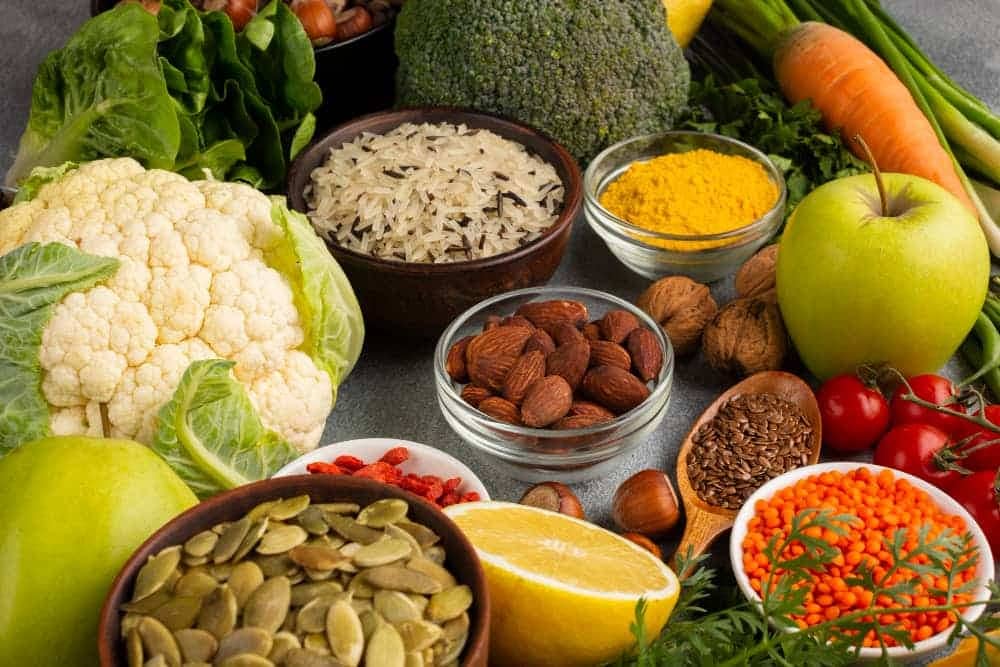Are Phytonutrient-Rich Foods the Key to Living Longer?
Phytonutrient-rich foods are often overlooked in today’s fast-paced world, where we find ourselves rushing through life: waking up, checking our phones for messages, grabbing a quick bite of breakfast, rushing out the door, eating a fat-rich meal for lunch, coming home exhausted, and opting for processed carbs and another fat-heavy dish because it’s easier and more convenient.
But this, even though it’s the current reality for millions of people, is at the cost of our health and longevity.
Processed foods and meals high in unhealthy fats may be convenient, but they can lead to inflammation, weaken the immune system, and increase the risk of chronic diseases like heart disease, diabetes, and cancer. Our fast-paced lifestyle might give us less time to think about healthy food options, but there’s a simple yet effective way to protect your health—through phytonutrient-rich foods
What’s the Alternative?
A More Colorful Plate or phytonutrient-rich foods.
A key strategy to combat the adverse health effects of modern eating habits is adding colorful, phytonutrient-rich foods to your plates. These nutrient-dense foods have the potential to protect you from chronic diseases and even certain cancer types.
The element responsible for this is phytonutrients (also known as phytochemicals), which are compounds that give phytonutrient-rich foods their vibrant colors and health-promoting properties. These foods, often found in fruits, vegetables, nuts, seeds, and legumes, are not only packed with vitamins and minerals but also contain compounds that help fight inflammation and strengthen the immune system.
In fact, a study published in the International Journal of Epidemiology found that higher fruit and vegetable intake, especially phytonutrient-rich foods, was associated with a lower risk of cardiovascular disease, cancer, and all-cause mortality. The study highlighted that increasing your consumption of these colorful foods can significantly improve your health.
The Power of Phytonutrient-Rich Foods: What You Need to Know
But how do you make your meals more colorful and nutrient-dense? Below, we explain how to incorporate phytonutrient-rich foods into your diet and maximize their benefits.
1. Prepare Plant Heavy Dishes
If you want the colors, you must include the plants.
The easiest way to add phytonutrient-rich foods to your diet is by making plants the largest portion of your meals. Go for vegetables and fruits, but don’t leave out legumes such as beans, lentils, black beans, and green grams. Nuts and seeds also add a healthy dose of phytonutrients to your dishes.
Most vegetables can be eaten raw or lightly cooked. Try steaming, sautéing, or grilling them to retain their nutrients.
Here’s a breakdown of each color you can add to your plate and the type of phytonutrients they provide:
- Green plants are rich in chlorophyll, folate, and compounds like sulforaphane and indoles. These nutrients support detoxification, may have anti-cancer properties, and are crucial for cellular health.
Examples: Spinach, kale, broccoli, Brussels sprouts, green beans, peas, avocados, and kiwis.
- Red plants are packed with lycopene and anthocyanins. Lycopene is a powerful antioxidant that may help protect against certain cancers and heart disease, while Anthocyanins are known for their anti-inflammatory properties.
Examples: Tomatoes, watermelon, red bell peppers, strawberries, raspberries, red apples, pomegranates, and red grapes.
- Blue and Purple plants indicate the presence of anthocyanins and resveratrol. These are known for their antioxidant properties and potential to support brain health and reduce inflammation.
Examples: Blueberries, blackberries, eggplant, purple cabbage, plums, and concord grapes.
- Yellow and orange plants signal the presence of carotenoids like beta-carotene, which your body converts to vitamin A. They’re great for eye health, immune function, and skin health.
Examples: Carrots, sweet potatoes, pumpkin, yellow bell peppers, corn, mangoes, pineapples, and oranges.
- White plants contain allicin and quercetin, which have been linked to heart health and may help lower blood pressure and cholesterol.
Examples: Garlic, onions, cauliflower, mushrooms, and white beans.
2. Keep The Peels On
The color of most veggies and fruits is usually concentrated on the peels. So, if you want to squeeze all the benefits of phytonutrients, avoid peeling eggplant, zucchini, carrots, and fruits like apples, peaches, guava, and kiwi.
Balancing It All
We’ve mentioned that your plate should consist mostly of plants, specifically phytonutrient-rich foods. But there are a few other things you need in your meals to make them balanced and healthy enough to sustain and keep you healthy.
Here’s how to round out your colorful plate:
- Lean Proteins: Include a serving of lean protein with your meals. This could be plant-based (like beans, lentils, or tofu) or animal-based (like chicken, fish, or lean beef). Aim for about a quarter of your plate to be protein.
- Healthy Fats: Add a tablespoon of olive oil to your salad, and include some avocado or sprinkle nuts or seeds over your dish. These fats help your body absorb the fat-soluble vitamins from your colorful veggies.
- Whole Grains: If you’re including grains, opt for whole grains like quinoa, brown rice, or whole wheat. These provide fiber and additional nutrients. Keep this to about a quarter of your plate.
- Hydration: While not on your plate, don’t forget to pair your meal with water, as it helps your body process all those nutrients.

Making a Colorful Plate on a Time and Budget Crunch
You can already see the benefits, but as we mentioned at the start of our article, making a colorful plate is a challenge for most people. This is why we’ve come up with these quick tips to make it easier.
1. If you can’t get fresh, buy frozen fruits and veggies. They are just as nutritious and often cheaper if you buy them in bulk.
2. Batch prepare veggies and fruits so it’s easier to snack and use them in meals later. This vegetable chopper is actually quite useful if you don’t want to spend hours chopping vegetables over the weekend.
3. Throw a variety of colorful vegetables into a slow cooker with some protein and whole grains for an easy, balanced meal.
Even if you can’t create a rainbow plate for every meal, adding even one or two extra colors to your usual dishes can make a significant difference.
Will you be trying phytonutrient-rich foods out? Let us know in the comments.
Related: What Is Holistic Living?






